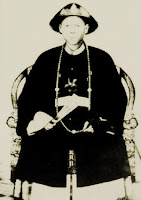 |
| View at night |
Literally Independence Square, it was formerly known as the Selangor Club Padang or simply the "Padang" and was originally the cricket green of the Selangor Club (now Royal Selangor Club).
The Sultan Abdul Samad Building, which grandly overlooks the Merdeka Square, is one of the most significant landmarks built by the British. Designed by A. C. Norman who was inspired by Indian Moghul architecture, this building was completed in 1897 and housed the Selangor State Secretariat and later the Supreme Court before being abandoned for a number of years. It now houses the Ministry of Heritage, Culture and Arts.
The field at the Merdeka Square's immediate vicinity was officially renamed 'Dataran Merdeka' on 1 January 1990 in conjunction of Visit Malaysia Year 1990. Merdeka Square was the starting line of The Amazing Race Asia 1.
On August 31, 2007, Prime Minister Abdullah Ahmad Badawi shouted 'Merdeka!' on midnight celebrations, where thousands of Malaysians celebrated 50 years of nationhood.
It is located in Kuala Lumpur, Malaysia. It is situated in front of the Sultan Abdul Samad Building. It was here the Union Flag was lowered and the Malayan flag hoisted for the first time at midnight (time: 12:00 AM) on August 31, 1957. Since then, Merdeka Square has been the usual venue for the annual Merdeka Parade (National Day Parade).
 |
| Wide green field |
Surrounding the square are many buildings of historical interest. Just beside the square is the Sultan Abdul Samad Building currently the office of the Ministry of Information, Communication and Culture of Malaysia.
Opposite the square is the famous Royal Selangor Club Complex built in 1884 as a meeting place for high-ranking members of the British colonial society. To the South is the former National History Museum which used to house a vast collection of historical items. The collection has recently been moved to Muzium Negara. To the North is the St. Mary's Anglican Cathedral, currently the Diocese of West Malaysia and the see of the Bishop of West Malaysia.
A 95-meter flagpole, one of the tallest in the world, marks that spot with a flat, round black marble plaque. It is located at the southern end of the square. Nearby is also the original Kuala Lumpur Railway Station, which is still operational. However the main hub has recently been moved to KL Sentral in 2001.
Reference: http://www.malaysiasite.nl/merdekaeng.htm

















